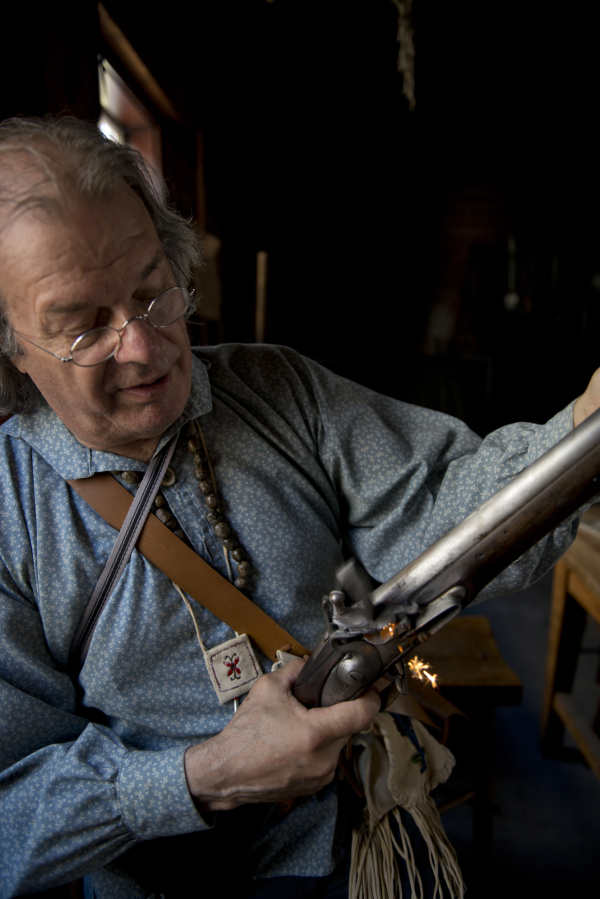There were a lot of skills a fur trapper needed to know to stay alive while traveling through the Pacific Northwest wilderness in the 1840s, many of which are still applicable today.
Visitors to the Hudson’s Bay Company Village at the Fort Vancouver National Historic Site on Saturday got a taste what it took to start a fire, build a shelter, knife making and more during summer months of the 19th century, and park rangers and former Marines Mike Twist and Brett Roth said those skills are still useful in a modern survival situation.
The two rangers taught a free pilot program called “Survive and Thrive: Lifeways of the Fur Trade” at Fort Vancouver, which taught people how to survive, but also gave them a new way to interact with the historic site.
“The goal is to teach survival skills in the context of Vancouver and Fort Vancouver,” Roth said. He added that survival skills courses are popular right now. And while there are numerous survival skills programs around the region, theirs is the first to tie into the context of the historic site.
“We’re always looking to get more people involved (with the fort) and saw we were lacking program with a hands-on approach,” he said. “Hopefully make people more confident to get out and go camping in the Gifford Pinchot (National Forest) or the national parks.”
About a dozen people spent the first half of the day visiting all of the buildings within the fort to learn the basics of the fur trade and its ecological impacts, blacksmithing, field and fort cooking techniques and more.
They then went into the field within the fort for hands-on lessons in survival skills and learned about firing a black powder rifle.
Twist said trappers and explorers survived in the hot summer months by staying close to water sources or traveling from one waterway to the next. They had little choice to do otherwise because their animals needed more water than they could carry.
The summer time was typically the slow season for trappers and many of them found work elsewhere or prepped for the upcoming winter, which was also their busy season.
They protected themselves from the hot sun and regulated their body temperatures with light-weight wool long-sleeved shirts and pants.
“The thing with wool is its almost magical in its properties in that it’ll keep cool in the heat and warm in the cold,” Twist said. “It breathes a lot better creates a micro climate that’ll protect you.”
Depending on how the pilot program was received by the participants, the rangers might begin teaching a winter survival skills course.
The program was free for participants and funded by a grant from the Washington State Historical Society and the James B. Castles Endowment.




